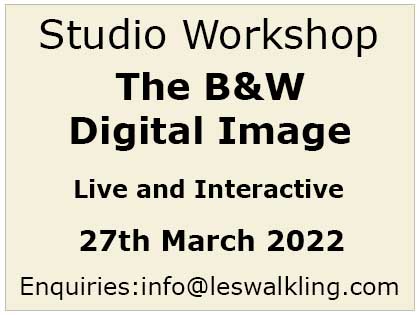 Les Walkling, An unspeakable betrayal 1999, 866mm x 864mm
Les Walkling, An unspeakable betrayal 1999, 866mm x 864mm
First impressions of Adobe Photoshop can all too often be confusing, confidence sapping, overwhelming complexity, and fear about doing the wrong thing. However despite Photoshop’s errors, inconsistency, incoherence and at times downright silliness, when employed in specific ways Photoshop can help produce truly stunning images capable of inflicting the deepest feelings and revelations.
So how might we begin an engagement with Photoshop that puts us on its ‘good side’ harnessing its magic and power while allowing us to transcend its limitations and our phobias about it?
Photoshop is what it is. Its inconsistencies aren’t going to be resolved anytime soon, and its errors can be equally of our making. Such as not understanding what we are doing, or how processes work, let alone confusion over what an image needs or can be.
Traditional non-inquiry based approaches to Photoshop education contribute to this problem. The training ‘industry’ that has evolved around Photoshop – its literature, websites, forums, tutorials, workshops and videos – is self-perpetuating and self-fulfilling. Inexperience and being ‘experienced at doing the wrong thing’ collude against knowledge and understanding. Recipes and tautologies substitute for comprehension and experimentation. And prescriptive teaching and learning outcomes conspire against creative objectives and inspired innovation.
So how else might we approach the teaching and application of Photoshop, and its integration into not just our workflows, but our creative life?
I believe there are three important considerations.
The first consideration is an ontological investigation into What is an image? That is, what constitutes an image? How do images do what they do? And what are images capable of becoming?
Once we have grasped the foundations and limits of images, the second consideration is an epistemology inquiry into What can be done to an image? That is, what are the tools, the principles, and the process? How is an image made? And how do images influence our editing of them?
This in turn inspires the third consideration, a personal inquiry or rationale for Why we do what we do to images? That is, why do I attach certain feelings to one image and not another? Or the same image rendered in a different way? And why render an image in one way rather than another?
Much of the ‘literature’ surrounding Photoshop, is defiantly silent on these matters. But by not understanding Photoshop within a broader inquiry into the nature and affect of constructed images, we risk denigrating our workflows into simplistic recipes, generalisations, mythologies, or plain misinformation. This in turn normalises Photoshop as a confusing, confidence sapping, overwhelmingly complex and fearful experience. This is grossly unfair to Photoshop, let alone the ‘problem’ of how wonderful images come to be created in the first place.
By understanding pictures first, and Photoshop second, we then only need to know how Photoshop helps or hinders picture making, what tools work as expected or required, and what promotes unwanted errors, collateral damage, leakage and mayhem.
Recalling that the grandest constructions evolve from, and are collaborations between, individual components and that solid foundations promote strength, stability and longevity, this seems a reasonable approach. For one thing it clarifies and separates what can be done from what needs to be done. It quickly and efficiently solves real world imaging problems thereby freeing up time, energy and focus that can be devoted to the images’s emotional content.
Which is also how an image comes to ‘represent more than it shows’, or in other words, how an image can ‘capture hearts and minds’ independently of what it is an image of.


{ 0 comments… add one now }